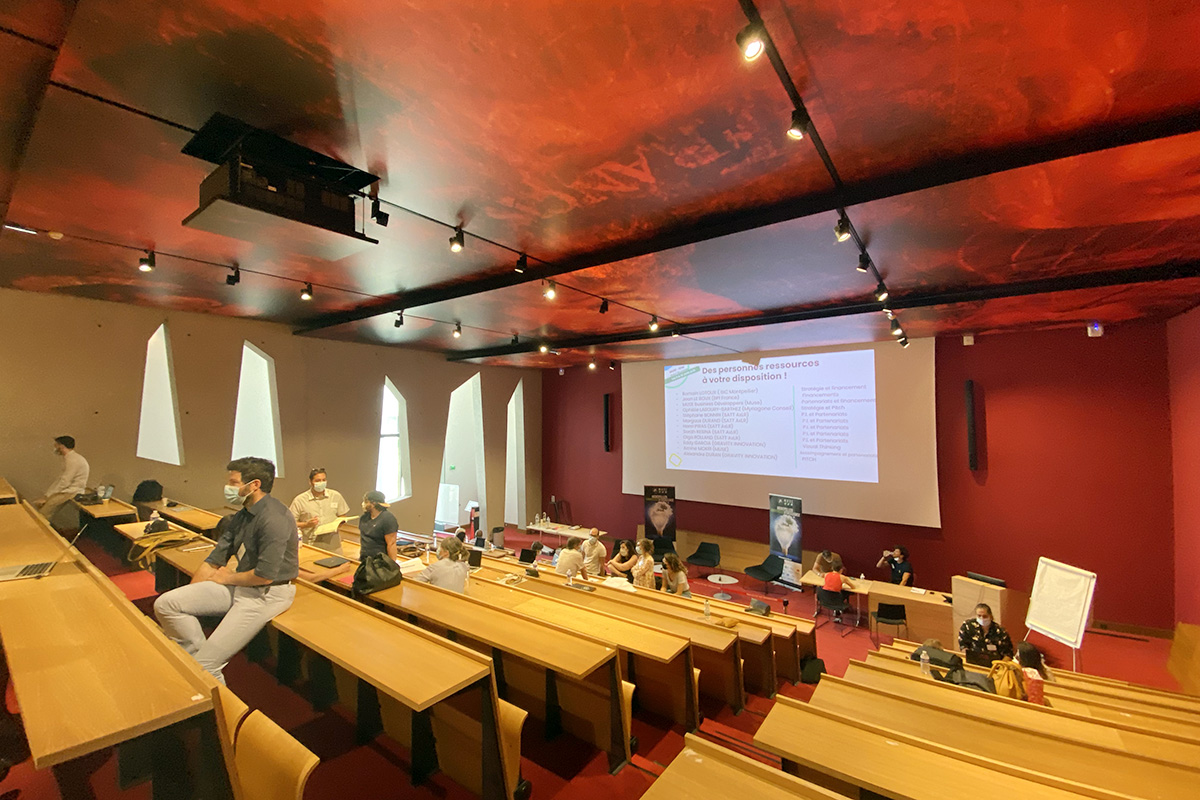BIM: a springboard for your ideas
Do you have a potentially innovative idea in the fields of agronomy, the environment and chemistry? Don't know how to get your project off the ground? On January 11 and 12, the Montpellier Innovation Booster (BIM) is organizing its third session for researchers, agents and students from the Muse I-Site. Workshops, meetings, conferences, get the ball rolling and take the path of innovation with BIM.

" In France, we certainly don't lack ideas, but we often lack the structures to believe in them and give ourselves the means to develop our innovations. BIM really meets this need," explains Sophie Brouillet. Last June, this in vitro fertilization specialist at Montpellier University Hospital attended two days of workshops on the "biology-health" theme organized by Montpellier's Innovation Booster.
Its aim: to develop embryonic organoids in order to improve knowledge of human embryos and increase the chances of pregnancy for infertile couples. " We lack fundamental and medical knowledge of human embryos. The organoids we want to develop are not capable of producing a baby, but they mimic the early stages of embryonic development very well and could therefore teach us what embryos need to develop properly ".
Open to all agents
When she received an e-mail at the beginning of the year informing her of these workshops, Sophie Brouillet initially thought that her project was not sufficiently mature. " I was under the impression that it was for extremely advanced projects, with investors, but in the end it was very useful, enabling me to avoid certain pitfalls and better understand how the network works ". Open to all I-Site Muse agents, the BIM's mission is to support project leaders at a very early stage. "All you need to participate is an idea with innovative potential," explains Manon Chittaro, in charge of skills development at Muse.
The starting point is precisely these two days, during which project leaders will be familiarized with tools and concepts they are not necessarily familiar with, such as the business model. " Participants will learn to work on their action plan and pitch their project in front of a jury made up of scientists and players from the socio-economic world. The aim is for project leaders to get live feedback so they can evaluate themselves, all in a very friendly atmosphere ", explains Amine Mokri, incubation business manager at I-Site Muse. Satt AxLr, BIC and AD'OCC are also taking part, offering coaching sessions.
Thinking in market terms
Our aim during these days is also to get them to think in market terms," stresses Amine Mokri. Is there anything equivalent on the market? Is there a need? Etc. Habib Belaïd is a post-doc researcher at the European Membrane Institute. He took part in the very first BIM session in 2020 with his project on biomaterials for dental implants. " For me, it was a real springboard for moving towards commercialization and gaining a better understanding of the business world. Thanks to BIM, I also benefited from six months' financial support to work on my prototype ".
This support enabled him to join the University of Montpellier's student and young alumni incubator, and to win the I-PhD innovation competition organized by Bpifrance. " Thanks to this competition, I benefit from 12 months' support from several consulting firms. I should soon file my first patent and launch the start-up during 2022."
The first two BIM sessions enabled some twenty project leaders to refine their presentation and face the jury. It was also an opportunity for the University of Montpellier and its I-SITE MUSE partners to detect good projects and support them as early as possible. " All BIM participants then benefit from personalized support, either from the entrepreneurship team or the MUSE partnership team, or from their own organization if it has a business development department. "Whether they want to create a company to add value to their technology, or more simply transfer it to an existing company, there's a favorable innovation ecosystem to do so," adds Amine Mokri.
Next BIM on January 11 and 12
Finally, by creating themed sessions, BIM enables project leaders from the same field to meet and discuss their innovations. " In the biology and health workshops, there were a lot of people working on organoids who didn't know each other. These two days were an opportunity for them to discuss and identify points on which they could work together, in addition to interdisciplinarity," concludes Manon Chittaro. The next BIM event will take place on January 11 and 12. Are you involved in agronomy, the environment or chemistry? Do you have an innovative idea? Don't hesitate to sign up: the BIM is waiting for you to develop your projects!
Practical: to register, fill in the registration form. Do you have any questions? Contact us by email.